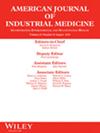Could Better-Quality Employment Improve Population Health? Findings From a Scoping Review of Multi-Dimensional Employment Quality Research and a Proposed Research Direction
Abstract
Background
Precarious employment, a specific part of the conceptual spectrum of employment quality (EQ), has been established as an important risk to individual and population health and well-being when compared to a standard employment circumstance. There remains a need, however, to explore whether and how EQ might be used as a tool to not only protect but also advance population health and well-being.
Methods
The purposes of this scoping review were to assess the analytic treatment of the multiple dimensions of EQ and the stances researchers take to characterize the state of knowledge of EQ that supports the idea that better EQ is a health-promoting factor. Quantitative, qualitative, and mixed-methods primary studies that included at least three of the seven conceptually-informed EQ dimensions were eligible. Studies were assessed for EQ dimensions represented, how dimensions were treated analytically, the pathogenic, ambivalent, or salutogenic stances used by investigators, and what each might tell us about how to leverage aspects of better-quality employment to improve population health.
Results
A total of 78 studies were included; 54 of these treated EQ dimensions in an interrelated way. Of the analytically interrelated studies, none had an explicit salutogenic stance. Some evidence suggests that a handful of EQ types might present an equal or reduced risk of poor health than the standard employment relationship, frequently used as a historic gold standard.
Conclusion
Research with a salutogenic stance might build our understanding of whether and how employment could be used to advance our collective well-being.


 求助内容:
求助内容: 应助结果提醒方式:
应助结果提醒方式:


